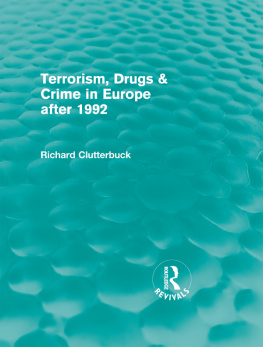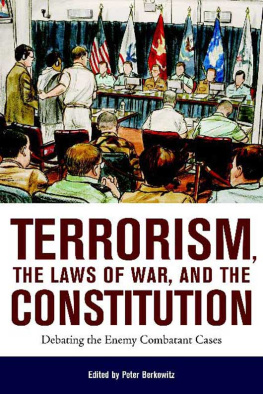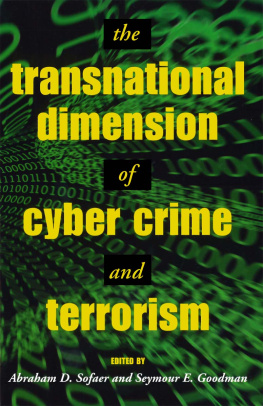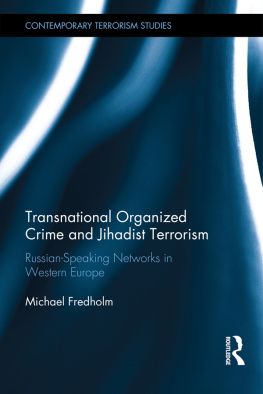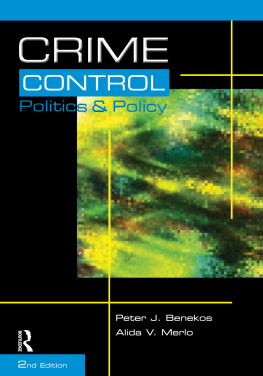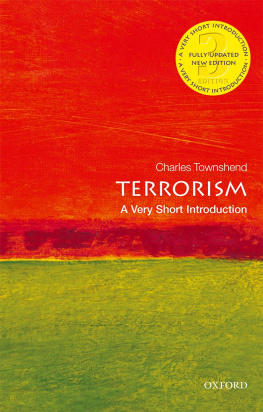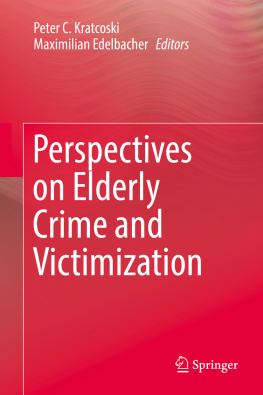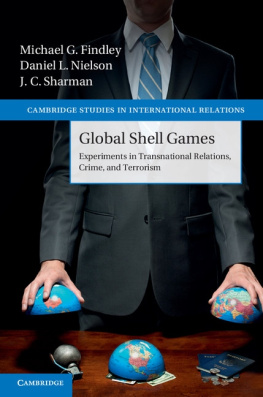crime and terrorism
Series editors: Nicole Rafter and Paul Rock
Compact Criminology is an exciting new series that invigorates and challenges the international field of criminology.
Books in the series are short, authoritative, innovative assessments of emerging issues in criminology and criminal justice offering critical, accessible introductions to important topics. They take a global rather than a narrowly national approach. Eminently readable and first-rate in quality, each book is written by a leading specialist.
Compact Criminology provides a new type of tool for teaching and research, one that is flexible and light on its feet. The series is designed to address fundamental needs in the growing and increasingly differentiated field of criminology.
Other Compact Criminology titles include:
Crime and Human Rights by Joachim J. Savelsberg
Crime and Risk by Pat OMalley
Comparative Criminal Justice by David Nelken
Experimental Criminology by Lawrence Sherman
Compact Criminology International Advisory Board:
Jan van Dijk, Tilburg University
Peter Grabosky, Australian National University
Kelly Hannah-Moffat, University of Toronto
John Laub, University of Maryland
Alison Liebling, University of Cambridge
crime and terrorism
Peter Grabosky and Michael Stohl
Peter Grabosky and Michael Stohl 2010
First published 2010
Apart from any fair dealing for the purposes of research or private study, or criticism or review, as permitted under the Copyright, Designs and Patents Act, 1988, this publication may be reproduced, stored or transmitted in any form, or by any means, only with the prior permission in writing of the publishers, or in the case of reprographic reproduction, in accordance with the terms of licences issued by the Copyright Licensing Agency. Enquiries concerning reproduction outside those terms should be sent to the publishers.
SAGE Publications Ltd
1 Olivers Yard
55 City Road
London EC1Y 1SP
SAGE Publications Inc.
2455 Teller Road
Thousand Oaks, California 91320
SAGE Publications India Pvt Ltd
B 1/I 1 Mohan Cooperative Industrial Area
Mathura Road
New Delhi 110 044
SAGE Publications Asia-Pacific Pte Ltd
33 Pekin Street #02-01
Far East Square
Singapore 048763
Library of Congress Control Number Available
British Library Cataloguing in Publication data
A catalogue record for this book is available from the British Library
ISBN 978-1-84920-031-8
ISBN 978-1-84920-032-5 (pbk)
Typeset by C&M Digitals (P) Ltd, Chennai, India
Printed by CPI Antony Rowe, Chippenham, Wiltshire
Printed on paper from sustainable resources
contents
acknowledgements
The authors would like to thank Julie Ayling, Sandy Gordon, James Jacobs, and Paul Rock for their comments on an earlier draft, and Christine Nam for her editorial assistance. We are also grateful for the institutional support of the Australian National Universitys Regulatory Institutions Network, The University of California, Santa Barbaras Department of Communication, Chuo University, and the Australian Research Council Centre of Excellence in Policing and Security.
ONE
introduction: terrorism and terrorists, crime and criminals
Introduction
Organized crime and terrorism are both hot button issues. Not only are they high on the policy agendas of most developed countries, they have become a part of popular culture. But they are not fiction. They can also be real threats to free societies. And, despite their fundamental differences, they have much in common.
This book looks at terrorism through the lens of criminology. In so doing, it seeks to compare two types of illicit activity: terrorism and conventional organized crime. It is surprising, yet understandable, that the explicit comparison of crime (especially organized crime) and terrorism has received relatively little scholarly attention (for exceptions, see Levi, 2006; Morselli, 2009). It is surprising because, as we shall see, terrorism and crime are similar in some respects, as are terrorists and criminals. It is understandable because areas of scholarly inquiry have become increasingly specialized. There are journals and research centers and conferences devoted to organized crime, and others to terrorism, but relatively few combining the two. It is our intention to make a modest contribution towards redressing this imbalance.
We apologize to those of our readers who are seeking normative guidance, or ideological reinforcement, from this book. While both of us seek a world in which we are optimally free to live our lives, as far as possible free of constraints imposed by terrorists, criminals and the state, we do not propose to mimic a morality play, depicting champions of truth and justice arrayed against forces of evil. Rather, our approach is one of analytical detachment. As you will see, this is easier said than done.
Plan of the book
This chapter will define terrorism and organized crime, and then we explore the degree of overlap of the two. It will then set out a number of theories that provide an explanatory framework for the two types of activity in question. Next we introduce two levels of analysis: the organizational and the individual, with a view towards explaining factors contributing to the genesis, the ascendancy, and the decline of illicit organizations, and the recruitment, the intensification of commitment, and the desistance of individual members.
summarizes descriptive material on terrorism and organized crime, discussing strengths and weaknesses of available data, and observable trends. It identifies forms of terrorism and of organized crime, and will explore domestic and transnational organized crime as a threat to national and regional security.
also explores the role of corruption, and the links between state actors on the one hand, and criminals and terrorists on the other, and discusses state support for criminal and terrorist activities, both foreign and domestic.
also looks at the adaptive behaviour of illicit organizations. The fluid environment within which terrorist and organized crime groups operate provides both threats and opportunities. The development of networked organizational forms by both terrorist and conventional criminal organizations has enhanced both their capacity and their resiliency. Both types of organization exploit emerging technologies, including digital technologies, for use as instruments, targets, or incidentally, for purposes such as record keeping.
considers state responses to terrorism and to organized crime, and observes notable successes and failures in each domain. In so doing, we discuss the relative merits of war fighting versus criminal justice. We also explore the consequences of strategies that rely on public mobilization, such as the creation of moral panics, and the manipulation of fear. The role of the media in the coverage of crime and terrorism will also be examined.





